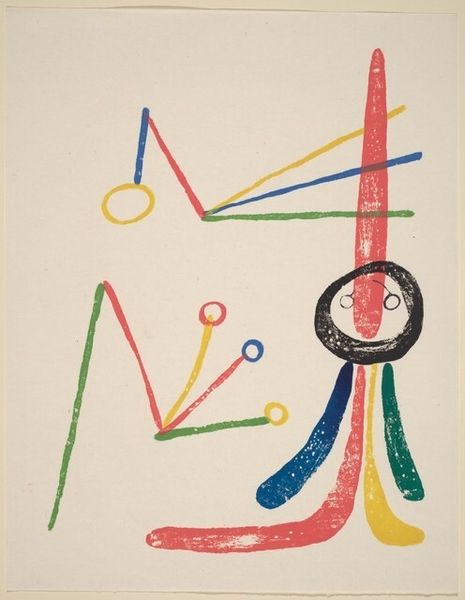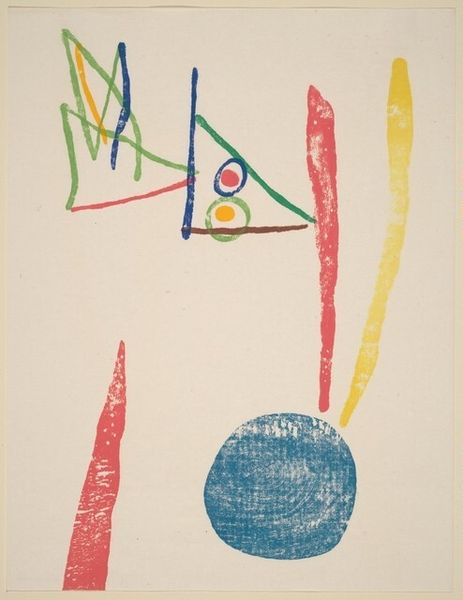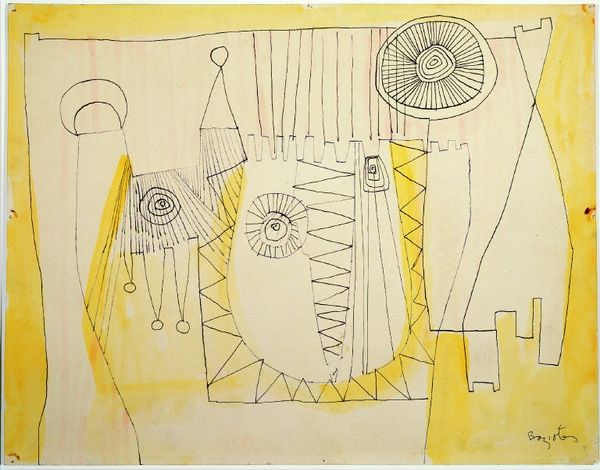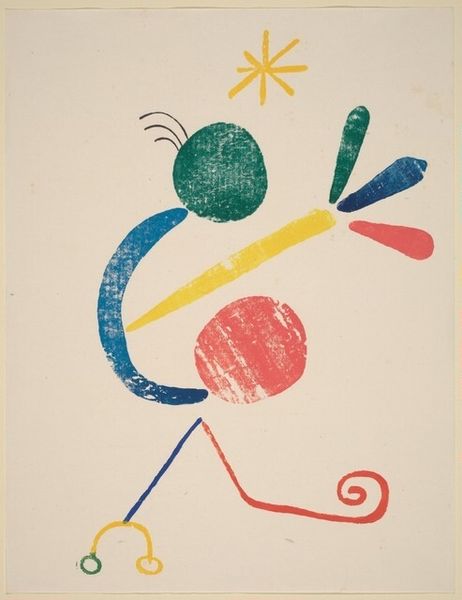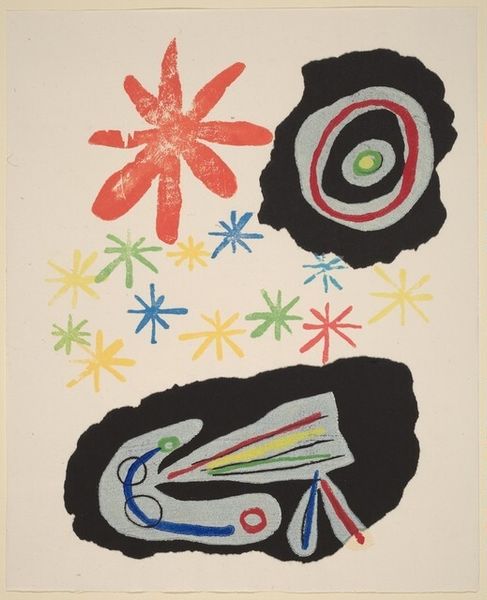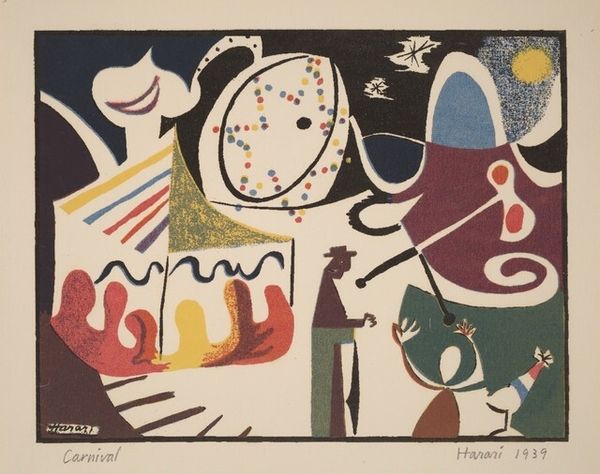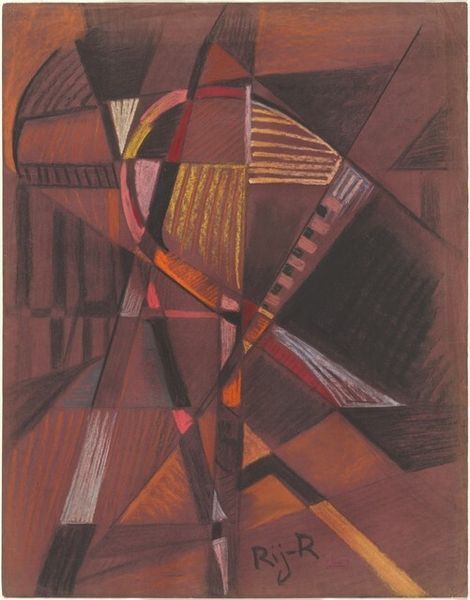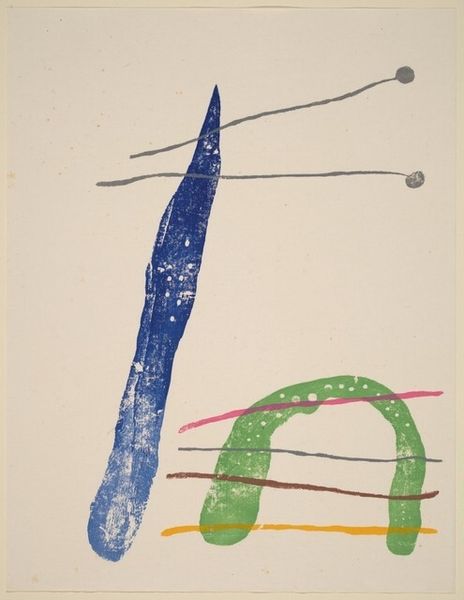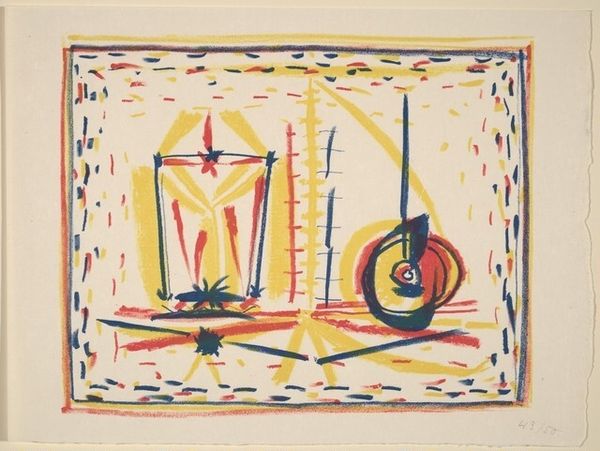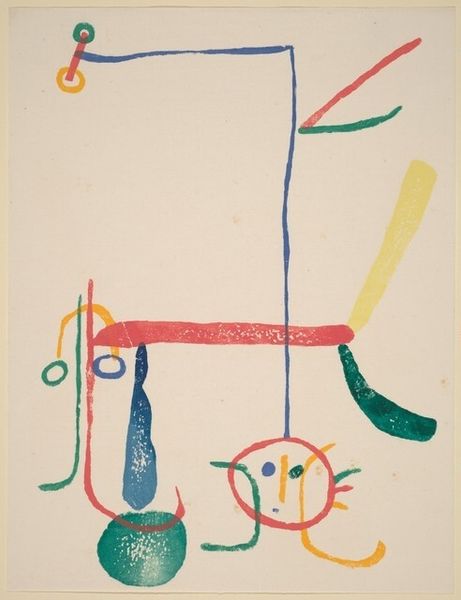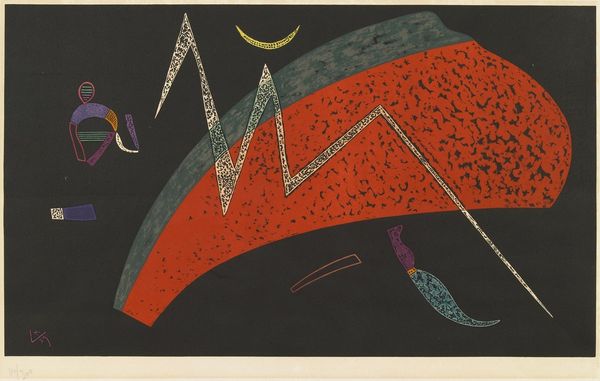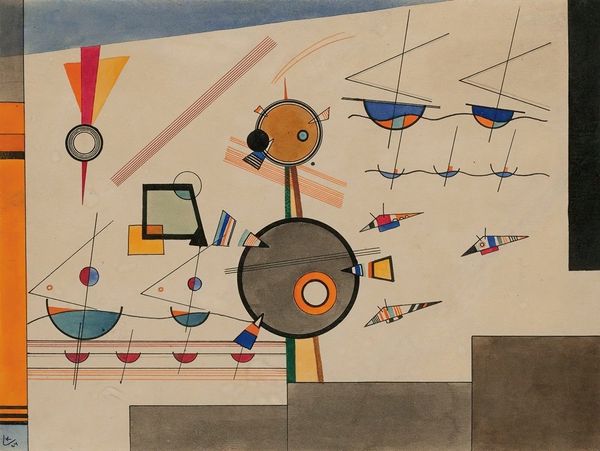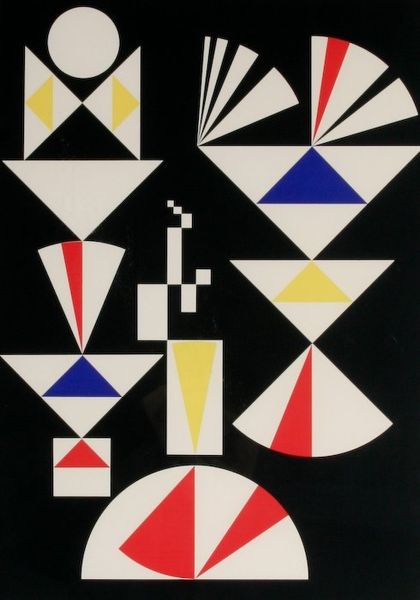
print, linocut
#
cubism
# print
#
linocut
#
pop art
#
linocut print
#
geometric-abstraction
#
abstraction
Copyright: National Gallery of Art: CC0 1.0
Editor: Right now, we're looking at "Composition," a linocut print by Pablo Picasso from 1946. It’s so striking; the simple shapes and colors, the red, yellow, and blue, almost feel like a child’s building blocks. How do you interpret this work, especially considering the historical context? Curator: Well, it’s crucial to consider when this piece was made. 1946… Europe was reeling from World War II. Picasso, a major cultural figure, created this geometric abstraction. Was this a deliberate move away from overtly political art? Or was it, perhaps, a visual language to process the fragmentation and rebuilding of society itself? The simple forms, the act of *re*composing, speak volumes. Editor: So, you're suggesting this seemingly simple artwork may reflect a larger societal healing process? The art world was really different after the War... Curator: Absolutely. The dominance of Paris as the art world's undisputed capital had begun to crumble. Abstract Expressionism was gaining ground in the U.S., fueled by a different kind of cultural energy and, frankly, funding. This piece sits right at the cusp of that shift. Picasso may be deliberately grappling with those changes, simplifying to communicate to a broader audience after the chaos. Editor: That’s fascinating. So, instead of just being a pleasing arrangement of shapes, it’s participating in a bigger dialogue about the role of art post-war? I hadn't considered how the shift in art's location affected even established artists. Curator: Precisely. It’s not just *what* is depicted but *why* and *where* it's depicted. Considering how art functions within these power structures is always vital. Editor: I will remember that! It’s so helpful to understand the broader context to truly appreciate a piece. Thanks for the insight. Curator: My pleasure, looking at art through the lens of history allows it to speak volumes.
Comments
No comments
Be the first to comment and join the conversation on the ultimate creative platform.
